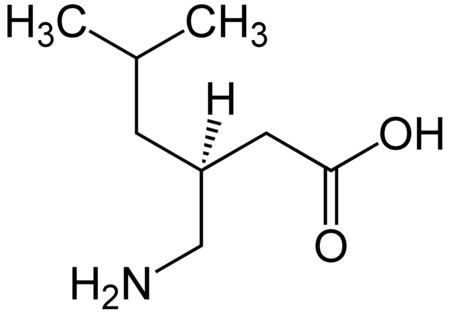Stacey asked
I began taking 3 capsules of Gabapentin 300mg at night in September 2014. I then increased to taking 4 300mg capsules at night in November 2016. I again changed to 2 twice daily in February 2017. I do not seem to be getting much benefit from Gabapentin anymore. What is the difference between Lyrica & Gabapentin? I know Lyrica is more expensive but what are the other differences? Would Lyrica be an alternative, if so what would be the signs that I should change? I am not in great discomfort but I am beginning to feel the nerve irritation more.
Answer
Lyrica and gabapentin are usually considered as first-line options to treat neuropathic pain. They both bind to voltage-gated calcium channels in a person’s central nervous system (CNS), and when bound, it results in decreased neurotransmitter release in the CNS which leads to less nerve pain.
Both gabapentin and Lyrica are used as adjunct therapy for partial seizures and post-herpatic neuralgia. Lyrica has one extra use; it is also indicated in the treatment of fibromyalgia and neuropathy pain in association with diabetes (known as diabetic neuropathy). While the two drugs are very similar, they do have some major differences.
Lyrica

Lyrica (pregabalin) is both chemically and structurally similar to gabapentin. It does however, have a unique way of being absorbed and has much better bioavailability than gabapentin does. Lyrica is almost totally absorbed (~90%) very quickly after taking by mouth. It's maximum absorption rate is nearly three times gabapentin. This is why the dosage levels of Lyrica are so much lower than the dosage levels of gabapentin.
Gabapentin

You can see from the chemical structures how closely gabapentin and Lyrica are related. It is not as well absorbed however and has only about a 60% bioavailability. It typically needs to be titrated over 4-6 weeks to reach an effective dose and reduce the severity and frequency of side effects.
In terms of efficacy, one study showed that Lyrica was 2.4 times more potent than Gabapentin for epilepsy, which likely means it could be considered more potent for neuropathic pain. In another study, authors showed that Gabapentin’s effect on reducing pain plateaued at the maximum dose of 3600 mg per day while the pain relieving effects of Lyrica continued to increase all the way up to it’s maximum dose of 450 mg per day. From the minimal head-to-head studies we have, Lyrica (although potentially more expensive) does show stronger binding to receptors, leading to increased potency, and a better response for neuropathic pain than gabapentin. Lyrica potentially has fewer side effects than gabapentin and may be better tolerated as well.
While both gabapentin and Lyrica have similar side effects including dizziness, drowsiness, weakness, and feeling tired, patients on Lyrica have not reported as much confusion as those on Gabapentin.
In terms of price, yes, Lyrica can also be more expensive, but price will also depend on your insurance. If you are paying out of pocket, gabapentin may be a better option.




